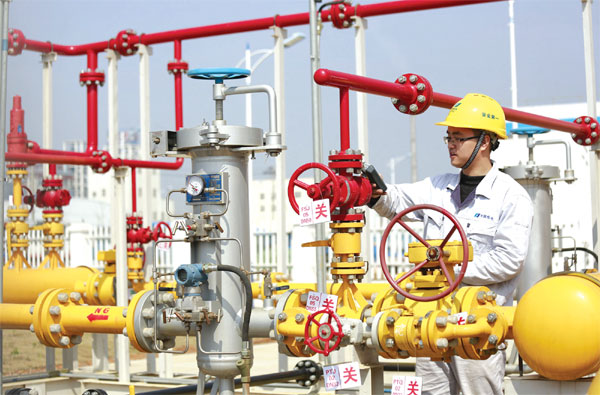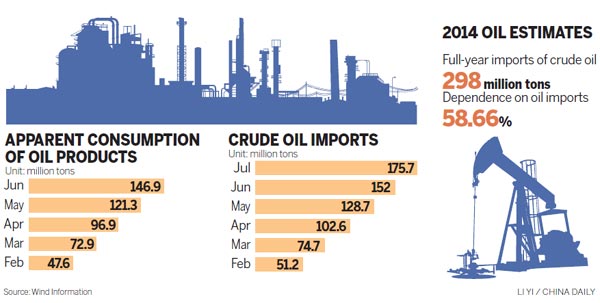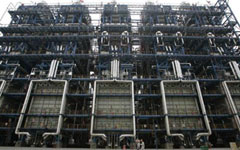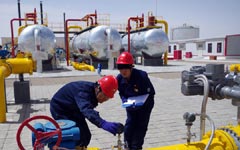China, Mongolia explore ways to expand bilateral economic ties
Source: www.chinamining.org Citation: Xinhua Date: August 21, 2014
Chinese President Xi Jinping is expected, during his upcoming visit to Mongolia, to work with Mongolian leaders to explore effective ways to expand and deepen bilateral economic and trade relations between two countries.
China has been Mongolia`s largest trading partner and a major investor for more than a decade, with the bilateral trade volume reaching nearly 6 billion U.S. dollars in 2013 -- nearly 20 times that of 2002 and more than half of Mongolia`s total foreign trade.
Xi`s visit will largely promote investment, economic and trade cooperation between the two countries, said Sun Weiren, the commercial counselor of the Chinese Embassy in Mongolia.
There are 6,169 Chinese enterprises registered in Mongolia as of June, 2013, accounting for 48.8 percent of foreign enterprises registered in Mongolia, according to statistics released by Mongolia.
Chinese investment totaled 2.56 billion U.S. dollars by the end of 2013, according to statistics released by China.
China and Mongolia share 14 border crossings for exports and imports, with the advantage of less transportation distance and lower cost.
China imports coal, oil, minerals, livestock and other primary products from Mongolia, while the electromechanical products, agricultural products, construction materials, and textiles from China are also popular in Mongolia.
The projects Chinese enterprises have engaged in include construction of roads, thermo-electricity stations, and housing, all of which serve as infrastructure build-up to help improve Mongolian people`s living standard.
China`s Gezhouba Corporation has built roads in western Mongolia, and other Chinese companies have built houses for Mongolian people. The Beijing Construction Engineering Group plans to build residential buildings in Ulan Bator, covering an area of 210 hectares with the support of preferential loans from China.
The financial cooperation between the two countries is also enhanced. The Bank of China (BOC) set up its representative office in Mongolia in 2012. In June 2014, the bank allocated its first loan of 25 million dollars to a local company, TUUSHIN. And more than 40 local companies have applied for loans of more than 3 billion dollars from the bank, covering such fields as energy, manufacture and infrastructure.
BOC will continue to support Chinese enterprises in Mongolia, as well as Mongolia`s construction of infrastructure, energy and resources development, and avoid competition with local banks, the chief representative of BOC to Mongolia, Dai Xingjun, said.
BOC, jointly with other Chinese enterprises, established two funds to help improve Mongolia`s education and the livelihood of the people, and to enhance cultural exchanges between the two.
Experts expect that China and Mongolia will work together to increase bilateral trade volume, improve the structure of foreign trade and investment, promote industrial upgrading, develop interconnection of railways, highways and electricity, as well as support cooperation in key areas and large-scale projects.
About CHINA MINING
Since first held in 1999, the scope and influence of CHINA MINING has grown rapidly year by year. As a global mining summit forum and exhibition, CHINA MINING Congress and Expo has become one of the world’s top mining events, and one of the world’s largest mining exploration, development and trading platforms, covering all aspects of the whole mining industry chain, including geological survey, exploration and development, mining rights trading, mining investment and financing, smelting and processing, mining techniques and equipment, mining services, etc. playing an active promotion role in creating exchange opportunities and enhancing mutual cooperation between domestic and foreign mining enterprises.
CHINA MINING Congress and Expo 2014 will be held at Meijiang Convention and Exhibition Center in Tianjin on November 20th-23rd, 2014. We invite you to join the event and to celebrate the 16th anniversary of CHINA MINING with us. For more information about CHINA MINING 2014, please visit: www.chinaminingtj.org.







